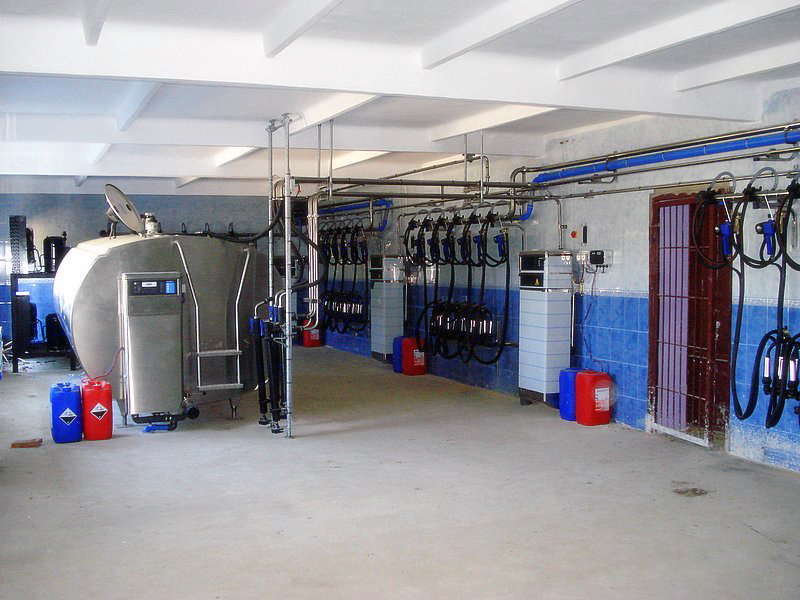Determining the type of milk largely depends on the quality of washing the milk pipe, and therefore, for more efficient and successful clerical work, special attention must be paid to it.

This procedure includes several successive steps:
Stage One. Rinsing with warm water.
In order to remove the milk remaining in the milk pipes,
milk line washed with cool (slightly warm) water, the temperature of which is less than 25 degrees. This temperature prevents the risk of milk curdling on the pipe walls. Flushing should be very plentiful, at least one hundred liters of water should be passed through each circuit of the milk line.
Stage Two. Circulation flushing with the addition of detergents.
На втором этапе температура воды в течение всей циркуляции напротив должна быть максимально высокой. Однако период этой процедуры должен быть ограниченным, так как температура растворенного моющего средства внутри труб снижается, вследствие чего растворенные отложения выпадают в осадок на стенках труб. В зимний период, при низких температурах, закольцовывать мойку не следует. Вместо этого лучше разбить мойку на два цикла, при этом во время второго снизив концентрацию
detergent up to 0.2%. It should be remembered that the level of concentration directly depends on the characteristics of the water. With soft water, the alkali concentration should be increased to 0.6%, and the acid should be reduced to 0.4%. If the water is hard - on the contrary, the alkali decreases, and the acid increases.
Stage Three. Final flushing.
Rinsing is carried out with clean water, the temperature of which is less than 25%. This procedure is of great importance, since its task is the final cleaning of pipes from acid and alkali residues.
 This procedure includes several successive steps:
This procedure includes several successive steps:
 This procedure includes several successive steps:
This procedure includes several successive steps: This procedure includes several successive steps:
This procedure includes several successive steps: